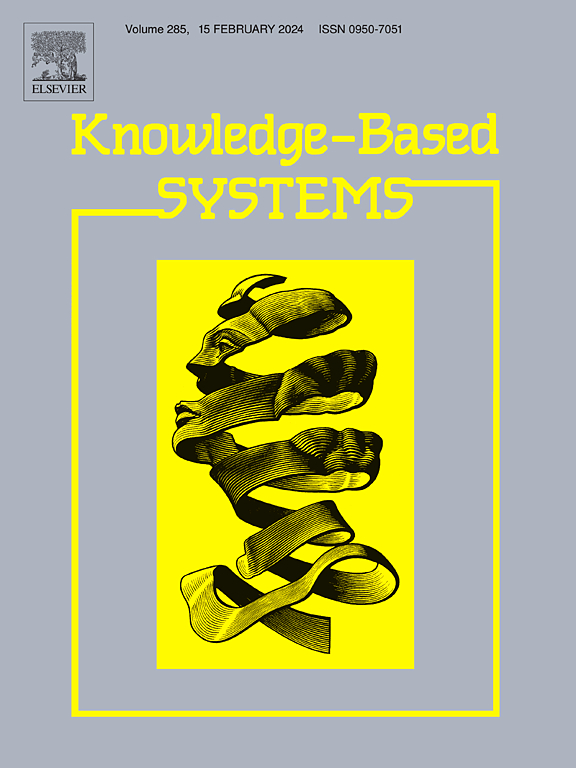A classification method based on dominance neighborhood granularity
IF 7.2
1区 计算机科学
Q1 COMPUTER SCIENCE, ARTIFICIAL INTELLIGENCE
引用次数: 0
Abstract
Classification algorithms, widely utilized in various practical settings, are increasingly demanded in critical domains to not only display high accuracy but also provide interpretable results. Granular Computing (GrC) theory, recognized for its capability to clarify complex data and issues through its concept of granularity, has become an intuitive and straightforward approach in problem-solving. Nevertheless, contemporary granular computing-based classification techniques are largely confined to the processing of Euclidean features of data, thereby neglecting relationships and structures between data within the data set. In response, we introduce a classification method based on dominance neighborhood granularity (CDNG). CDNG, while accommodating Euclidean features, also incorporates non-Euclidean features to obtain diverse information, thereby augmenting predictive accuracy. Specifically, CDNG establishes a dominance neighborhood granularity drawn from neighborhood granularity and dominance granularity. Subsequently, we appraise CDNG using real datasets and performance metrics, including accuracy (ACC), Recall Score (RS), and F1 score (F1), contrasting our findings with other classification methodologies. We conclude with an analysis of parameter experiments and multi-angle noise experiments specific to CDNG. The experimental results affirm that CDNG outperforms other methods in terms of accuracy while maintaining robustness concomitant with high accuracy.
求助全文
约1分钟内获得全文
求助全文
来源期刊

Knowledge-Based Systems
工程技术-计算机:人工智能
CiteScore
14.80
自引率
12.50%
发文量
1245
审稿时长
7.8 months
期刊介绍:
Knowledge-Based Systems, an international and interdisciplinary journal in artificial intelligence, publishes original, innovative, and creative research results in the field. It focuses on knowledge-based and other artificial intelligence techniques-based systems. The journal aims to support human prediction and decision-making through data science and computation techniques, provide a balanced coverage of theory and practical study, and encourage the development and implementation of knowledge-based intelligence models, methods, systems, and software tools. Applications in business, government, education, engineering, and healthcare are emphasized.
 求助内容:
求助内容: 应助结果提醒方式:
应助结果提醒方式:


